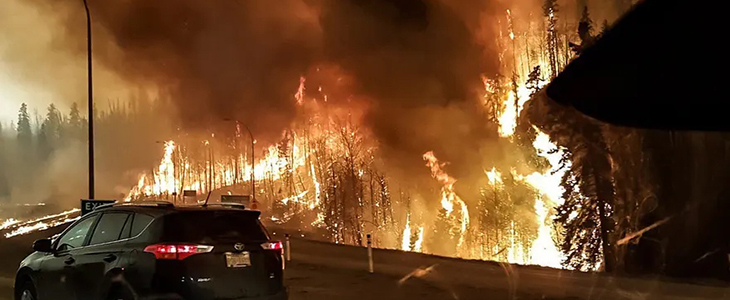We have given Earth a fever
His book about a blaze so hot it vaporised concrete and turned a Canadian city to ash has just won the Baillie Gifford prize. John Vaillant explains why the world we think we live in no longer exists.

On the afternoon of 3 May 2016, firefighters spotted a plume of smoke near the Canadian oil city of Fort McMurray. It was early in the fire season for the subarctic region and slabs of ice were still floating on its lakes. A water-bombing helicopter was immediately scrambled but it was already too late. Within two hours, flames had roared through 60 hectares (150 acres) of forest. By the end of the day, 90,000 people had been driven from their homes. Whole neighbourhoods had been reduced to ash.
A week later, recalls John Vaillant in Fire Weather, a gripping account that has just won the Baillie Gifford prize for nonfiction, the city looked as if it had suffered a nuclear blast. All that remained of many houses was piles of nails. Sifting through the ashes of her home in what had been a five-storey building, a local journalist found just a colander and some barbecue tools. Even the ceramic toilet had been vaporised.
Vaillant was working on his second novel at a writing retreat in Italy when the story began to circulate on social media. “It was like hearing Houston was on fire,” he says. “Fort McMurray is the petroleum hub of Canada. It’s a wealthy, powerful, charismatic, overbuilt place and the idea of it being on fire was absolutely shocking.” The city, Vaillant goes on, “was shrouded in a firestorm cloud 45,000ft tall. The fire had punctured the stratosphere, generating its own lightning and hurricane-force winds.”

Leave a Reply